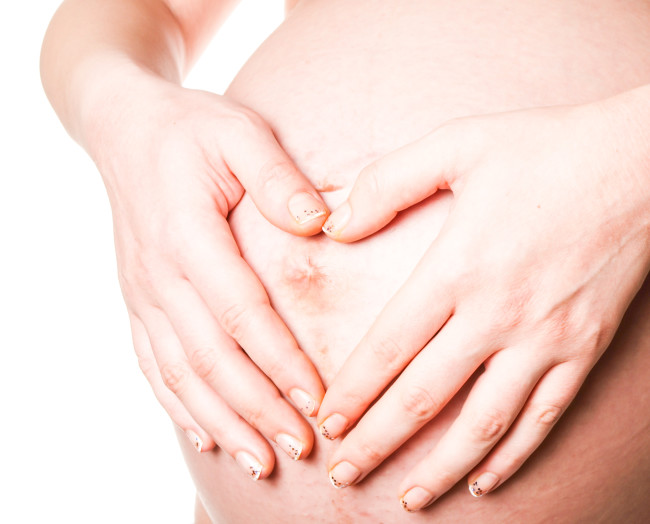First trimester spotting
About 20 to 30 percent of all pregnant women have a little bit of bleeding or spotting during the first trimester and most of them are not having miscarriages.
Instead, they might be experiencing:
- Implantation bleeding (when the fertilized egg finishes its journey through the fallopian tube and burrows into the uterine lining)
- Cervical bleeding caused by fragile, super-filled teeny-tiny blood vessels that break with any kind of contact and sometimes with no contact at all
- Vaginal infection that makes vaginal tissues inflamed and irritated
- Hormonal changes
If you’re not miscarrying, the spotting should stop on its own within a few hours (sometimes days) and chances are good it won’t start again.
If you are miscarrying, the bleeding will most likely increase. Approximately 20 percent of all pregnancies end in miscarriage (most before a woman knows she’s pregnant) and most happen in the first trimester.
Second trimester spotting
Spotting during the second trimester is most likely due to hormonal changes, a sensitive cervix or vaginal irritation, but it could also be caused by a woman’s placenta being too close to her cervix.
Normally, the placenta is located on the uterine wall nowhere near the cervix. If your placenta is in a weird position and is encroaching your cervix, that means that some of the highly vascular tissue could be letting blood leak through your cervix. While it’s probably not going to harm you or your baby, your midwife or doctor is going to want to keep a close eye on things, just in case the placenta has problems adhering to the uterine wall.
I know that sounds scary, but very often, as the uterus grows, the cervix repositions itself and the placenta no longer covers it.
If the placenta still partially or completely covers the cervix during the last weeks of pregnancy; that’s a rock solid reason for having a C-section. You can’t deliver a baby vaginally if the placenta covers the cervix. Nope – Never.
Third trimester spotting
If spotting occurs late in your pregnancy, near your due date – congratulations, that might be bloody show and labour might be just around the corner. It shouldn’t be heavy bleeding – nothing that soaks a pad. It’s very often mixed with discharge and sometimes with gunky, chunky “mucousy” stuff that indicates the mucous plug is dissolving. It’s gross and it’s messy, but it’s also kind of exciting – something’s going on down there.
Any spotting, whether it’s in the first, second or third trimester should be reported to your midwife or doctor. Even if there’s not a lot they can do about it (when it happens very early in pregnancy) they can provide support, information and reassurance. You’re going to need that. Chances are good that you and your baby are 100 percent fine, but it’s 100 percent normal to feel afraid and vulnerable. Get the support you need from your healthcare providers, your partner, your family and friends.
DISCLAIMER: Any information provided in this article is for educational purposes only. It is not intended to be medical advice, nor does it replace care given by your health care provider. Please consult your health care provider when seeking medical advice.
Jeanne Faulkner
Latest posts by Jeanne Faulkner (see all)
- Spotting during pregnancy – should you be worried? - August 11, 2014
-
No Comments" href="https://all4baby.co.za/newborns-0-6-months/birth-defects/975/worlds-first-kidney-dialysis-machine-infants-now-exists/">

World’s first kidney dialysis machine for infants now exists!
-
No Comments" href="https://all4baby.co.za/uncategorized/965/baby-sense-principles-happy-days-peaceful-nights/">

Baby Sense Principles for Happy Days and Peaceful Nights
-
No Comments" href="https://all4baby.co.za/newborns-0-6-months/feeding/955/sterilising-baby-bottles-steam-cold-water-sterilise/">

Sterilising baby bottles: To steam or cold water sterilise?
-
No Comments" href="https://all4baby.co.za/newborns-0-6-months/newborn-basics/782/baby101-johnsons-baby-sense-seminar/">

#baby101 at the Johnson’s Baby Sense Seminar


 Saving...
Saving...